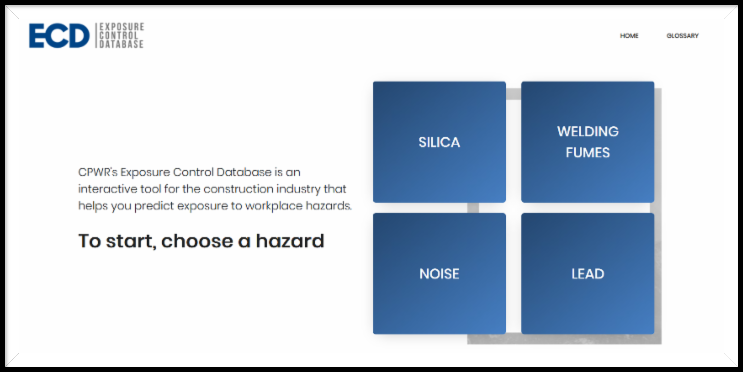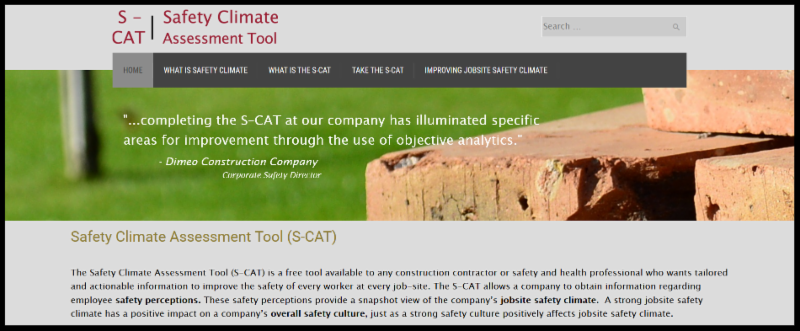|
CPWR UPDATE
|
January 2019
| |
From the Desk of Chris Trahan Cain, Executive Director
|
|
|
|
A New Year's Resolution:
Better Worker Safety and Health in the Building Industry
 Happy New Year! As a reader of the CPWR UPDATE, I'm sure you've resolved to do all you can to make construction workers safer and healthier in 2019. CPWR is ready to help you do it.
CPWR's Exposure Control Database can help you anticipate and control worker exposures to silica, welding fumes, lead, and noise. This free online tool allows users to enter a construction task, proposed controls, and other variables and obtain a predicted exposure level based on exposure data from trusted sources. A recorded webinar on the database will walk you through its features.
January 2019 marks two years since CPWR's Foundations for Safety Leadership (FSL) training module was deemed worthy by OSHA to be used as an official elective for the OSHA 30-hour outreach training curriculum. FSL is a free, interactive training curriculum that instructors can use to teach foremen and lead workers critical safety leadership skills. FSL is now also available in Spanish. View this recorded webinar to learn more.
Visit CPWR at the World of Concrete 2019!
Will you be attending this year's World of Concrete expo in Las Vegas? We invite you to...
See you there!
|
|
TOOLS FOR SAFETY AND HEALTH
Take Stock of Your Safety Climate in 2019
 The New Year is the perfect time to review your safety and health management program, and CPWR can help you do it. The Safety Climate Assessment Tool (S-CAT) is a free online resource contractors can use to self-assess their safety and health programs; users can take the quick self-test in English or Spanish. We also offer a special version tailored to the needs of small contractors, the S-CAT for Small Contractors. To learn more about these and other CPWR resources to help contractors and their employees strengthen their job site safety climate, CLICK HERE. The New Year is the perfect time to review your safety and health management program, and CPWR can help you do it. The Safety Climate Assessment Tool (S-CAT) is a free online resource contractors can use to self-assess their safety and health programs; users can take the quick self-test in English or Spanish. We also offer a special version tailored to the needs of small contractors, the S-CAT for Small Contractors. To learn more about these and other CPWR resources to help contractors and their employees strengthen their job site safety climate, CLICK HERE.
|
RESEARCH NEWS
A Field test of N95 Respirators against Nanoparticles on Construction Sites
In this study, researchers positioned a manikin wearing an N95 respirator on multiple construction sites and used a commercially available nanoparticle counter to collect air samples and measure potential worker exposures and respirator efficiency. The manikin was placed near concrete drilling and grinding activities, earthmoving, and woodcutting. The field experiments showed that concrete blasting and grinding activities released more nanoparticles than the other activities, and that while the N95 respirators reduced exposures, in many cases they do not provide 95% protection. CLICK HERE for a summary of Field Evaluation of N95 Filtering Facepiece Respirators on Construction Jobsites for Protection against Airborne Ultrafine Particles. The study, which grew out of exploratory research conducted as a CPWR Small Study, is published in International Journal of Environmental Research and Public Health.
|
January 23 @ 12pm ET (30 min). Fatality Rates in Construction Vary Threefold by State: Do OSHA and Workers' Compensation Play a Role? Drs. Wayne Gray and John Mendeloff describe the variation in construction industry fatality rates across states and over time (starting in 1992) and provide estimates of the effects of both OSHA enforcement and state worker's compensation policies on the rates. CLICK TO REGISTER
|
Exposure to organophosphate flame retardants in spray polyurethane foam applicators: Role of dermal exposure. Anila Bello, Courtney Cariganan, Yalong Xue, Heather Stapleton, and Dhimiter Bello, 2018. Environment International
Characterization of occupational exposures to respirable silica and dust in demolition, crushing and chipping activities. Anila Bello, Christopher Mugford, Amanda Murray, Susan Shepherd, and Susan Woskie. Annals of Work Exposures and Health |
Survey: Workers Lack Awareness of Potentially Hazardous Nanomaterials. ENR
|
|
|
|